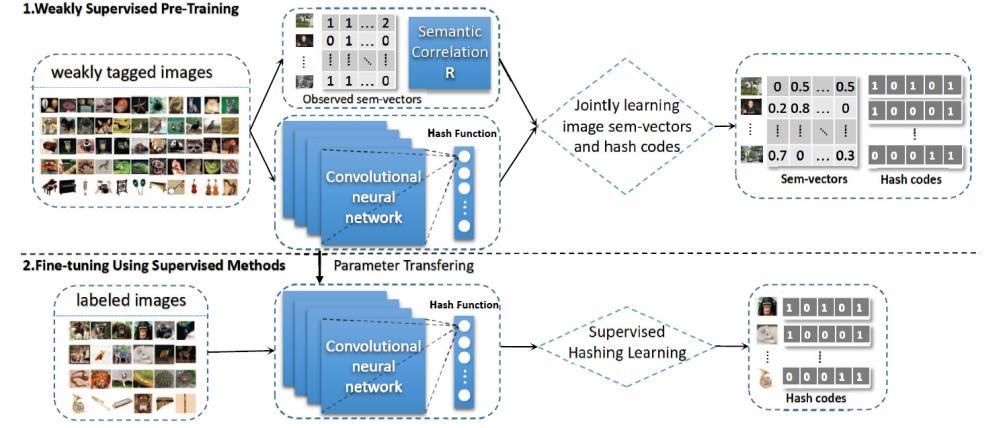注意:此代碼實現的是求目標函數最大值,求最小值可將適應度函數除以-1(框架代碼已實現)。
注意:此代碼實現的是求目標函數最大值,求最小值可將適應度函數除以-1(框架代碼已實現)。
注意:此代碼實現的是求目標函數最大值,求最小值可將適應度函數除以-1(框架代碼已實現)。
1.代碼實現
不了解萬有引力算法可以先瞧瞧優化算法筆記(十七)萬有引力算法
實現代碼前須要先完成優化算法實現(二)框架編撰中的框架的編撰。
文件名描述
..\frameUnit.m
個體
..\frame.m
算法主體
以及優化算法實現(四)測試粒子群算法中的測試函數、函數圖象的編撰。
文件名描述
..\frames.m
測試函數,求值用
..\frame.m
函數圖象萬有引力常數,作圖用
萬有引力算法的個體有三個獨有屬性:速率、質量和加速度。
萬有引力算法個體
文件名:..\.m
% 萬有引力算法個體
classdef GSA_Unit < Unit
properties
% 速度
velocity;
% 加速度
acc;
% 質量
mass;
end
methods
function self = GSA_Unit()
end
end
end

萬有引力算法算法主體
文件名:..\.m
% 萬有引力算法
classdef GSA_Base < Algorithm_Impl
properties
% 算法名稱
name = 'GSA';
% 重力加速度
G;
end
% 外部可調用的方法
methods
function self = GSA_Base(dim,size,iter_max,range_min_list,range_max_list)
% 調用父類構造函數
self@Algorithm_Impl(dim,size,iter_max,range_min_list,range_max_list);
self.name ='GSA';
% 初始加速度
self.G = 100;
end
end
% 繼承重寫父類的方法
methods (Access = protected)
% 初始化種群
function init(self)
init@Algorithm_Impl(self)
%初始化種群
for i = 1:self.size
unit = GSA_Unit();
% 隨機初始化位置:rand(0,1).*(max-min)+min
unit.position = unifrnd(self.range_min_list,self.range_max_list);
% 計算適應度值
unit.value = self.cal_fitfunction(unit.position);
unit.mass = 0;
unit.velocity = zeros(1,self.dim);
unit.acc = zeros(1,self.dim);
% 將個體加入群體數組
self.unit_list = [self.unit_list,unit];
end
end
% 每一代的更新
function update(self,iter)
update@Algorithm_Impl(self,iter)
% 更新質量
self.update_mass();
% 更新加速度
self.update_acc(iter);
% 更新速度
self.update_velocity();
% 更新位置
self.update_position();
end
% 更新質量
function update_mass(self)
sum_mass = 0;
[value,index] = sort([self.unit_list.value],'descend');
best_value = value(1);
worst_value = value(end);
% 計算各個個體的質量
for i = 1:self.size
self.unit_list(i).mass = (self.unit_list(i).value-worst_value+realmin('double'))/(best_value-worst_value+realmin('double'));
sum_mass = sum_mass + self.unit_list(i).mass;
end
% 將質量歸一化
for i = 1:self.size
self.unit_list(i).mass = self.unit_list(i).mass/sum_mass;
end
end
% 更新加速度
function update_acc(self,iter)
cur_G = self.G*exp(-20*iter/self.iter_max);
for i = 1:self.size
new_acc = zeros(1,self.dim);
for j = 1:self.size
if(i==j)
continue
end
% 計算兩個體距離
distance = sqrt(sum((self.unit_list(i).position-self.unit_list(j).position).^2));
% 根據距離,位置,質量計算加速度
new_acc = new_acc+self.unit_list(j).mass*unifrnd(0,1,1,self.dim).*(self.unit_list(j).position-self.unit_list(i).position)/(distance+realmin('double'));
end
new_acc = new_acc*cur_G;
self.unit_list(i).acc = new_acc;
end
end
% 更新速度
function update_velocity(self)
for i = 1:self.size
self.unit_list(i).velocity = unifrnd(0,1,1,self.dim).*self.unit_list(i).velocity + self.unit_list(i).acc;
end
end
% 更新位置
function update_position(self)
for i = 1:self.size
new_pos = self.unit_list(i).velocity + self.unit_list(i).position;
new_pos = self.get_out_bound_value(new_pos);
new_value = self.cal_fitfunction(new_pos);
self.unit_list(i).position = new_pos;
self.unit_list(i).value = new_value;
end
end
% 獲取當前最優個體的id
function best_id=get_best_id(self)
% 求最大值則降序排列
[value,index] = sort([self.unit_list.value],'descend');
best_id = index(1);
end
end
end
文件名:..\.m
算法實現,承繼于Base,圖便捷也可不寫,直接用萬有引力常數,這兒為了命名一致。
% 萬有引力算法實現
classdef GSA_Impl < GSA_Base
% 外部可調用的方法
methods
function self = GSA_Impl(dim,size,iter_max,range_min_list,range_max_list)
% 調用父類構造函數設置參數
self@GSA_Base(dim,size,iter_max,range_min_list,range_max_list);
end
end
end
2.測試
測試F1
文件名:..\Test.m
%% 清理之前的數據
% 清除所有數據
clear all;
% 清除窗口輸出
clc;
%% 添加框架路徑
% 將上級目錄中的frame文件夾加入路徑
addpath('../frame')
%% 選擇測試函數
Function_name='F1';
% [最小值,最大值,維度,測試函數]
[lb,ub,dim,fobj]=Get_Functions_details(Function_name);
%% 算法實例
% 種群數量
size = 50;
% 最大迭代次數
iter_max = 1000;
% 取值范圍上界
range_max_list = ones(1,dim)*ub;
% 取值范圍下界
range_min_list = ones(1,dim)*lb;
% 實例化萬有引力算法類
base = GSA_Impl(dim,size,iter_max,range_min_list,range_max_list);
% 告訴算法求不是求最大值
base.is_cal_max = false;
% 確定適應度函數
base.fitfunction =fobj;
% 運行
base.run();
%% 繪制圖像
figure('Position',[500 500 660 290])
% Draw search space
subplot(1,2,1);
func_plot(Function_name);
title('Parameter space')
xlabel('x_1');
ylabel('x_2');
zlabel([Function_name,'( x_1 , x_2 )'])
% Draw objective space
subplot(1,2,2);
% 繪制曲線
semilogy(base.value_best_history,'Color','r')
title('Objective space')
xlabel('Iteration');
ylabel('Best score obtained so far');
% 將坐標軸調整為緊湊型
axis tight
% 添加網格
grid on
% 四邊都顯示刻度
box off
legend(base.name)
display(['The best solution obtained by ',base.name ,' is ', num2str(base.value_best)]);
display(['The best optimal value of the objective funciton found by ',base.name ,' is ', num2str(base.position_best)]);
